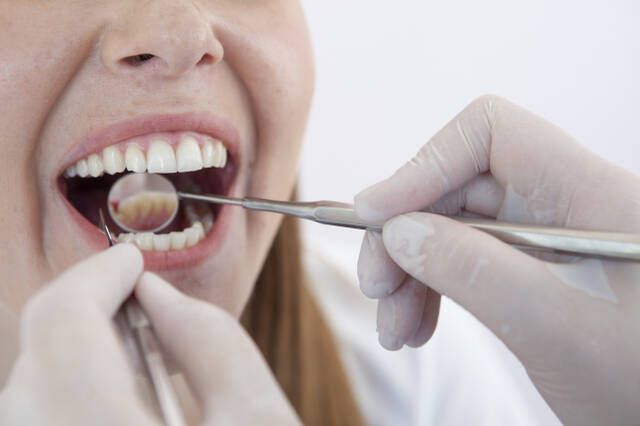Oukaijie said that dental calculus usually deposits at the junction of the tooth surface and the gums and gathers bacteria, causing redness, inflammation and bad breath. If it is not treated, it will lead to gingival recession and loose teeth over time; situation photo.
(The picture is taken from photoAC)
[Health Channel/Comprehensive Report] Many people have the habit of cleaning their teeth regularly to ensure oral hygiene and health.
Dentists said that after some people wash their teeth, they find that there are calculus under the gums, and subgingival calculus scraping is required at this time.
He pointed out that dental calculus usually deposits at the junction of the tooth surface and the gums and accumulates bacteria, causing redness, inflammation and bad breath. If left untreated, the gums will shrink and the teeth will become loose over time.
Dentist Ou Kaijie posted on the Facebook fan page "Ou Kaijie Dr. Ou Dentist Club" that regular tooth cleaning can prevent oral diseases, but after some people have their teeth cleaned, the doctor said that there are dental calculus under the gums, and subgingival dental treatment is needed. Stone scraping.
He pointed out that dental calculus can be divided into upper and lower gums.
Please read on...
Why does tartar grow under the gums?
Oukaijie explained that dental calculus usually deposits at the junction of the tooth surface and the gums and gathers bacteria, causing symptoms such as gingivitis, bad breath, red and swollen gums, and bleeding. If it is not treated, it will become bigger and thicker. Then, it continuously compresses the gums and stimulates the periodontal tissue, causing the crown to spread downward, the gums to shrink gradually, and the alveolar bone to slowly absorb. Over time, the teeth gradually loosen, and the calculus on the gums will attack the roots of the teeth.
How to treat subgingival calculus
Oukaijie said that ordinary supragingival calculus can be cleaned up through tooth scaling, while subgingival calculus requires subgingival curettage. The gingivist will use a special instrument (periodontal scraper) to extend into the gingival sulcus. Scrape away the infection on the surface of the tooth root and the calculus and plaque in the periodontal pocket.
☆Health news will never be missed, click like to follow the fan page.
☆For more important medical news, please go to Liberty Health.com.
keywords
gums
oral health
dental care
Tartar
related news
